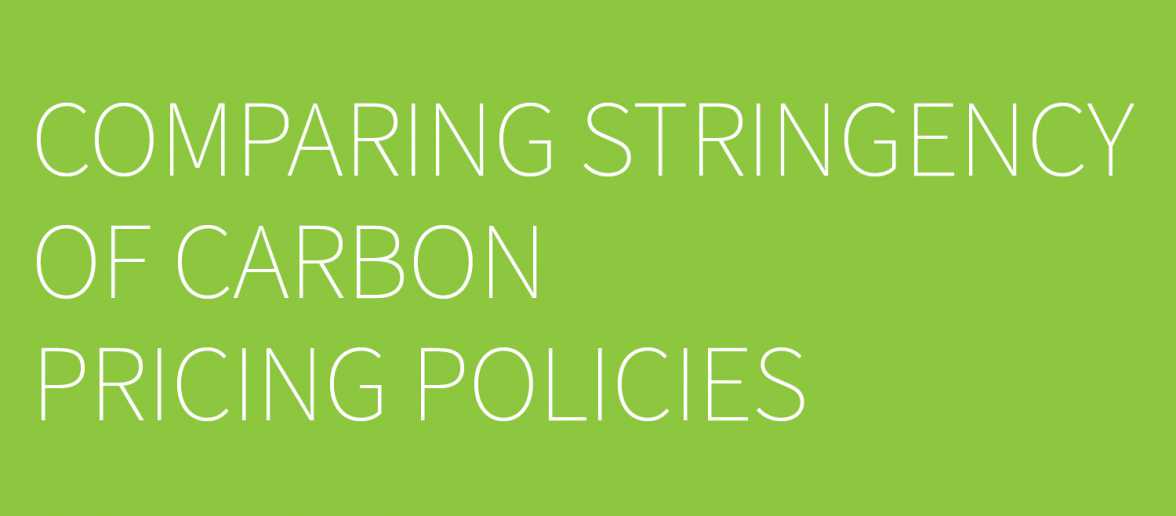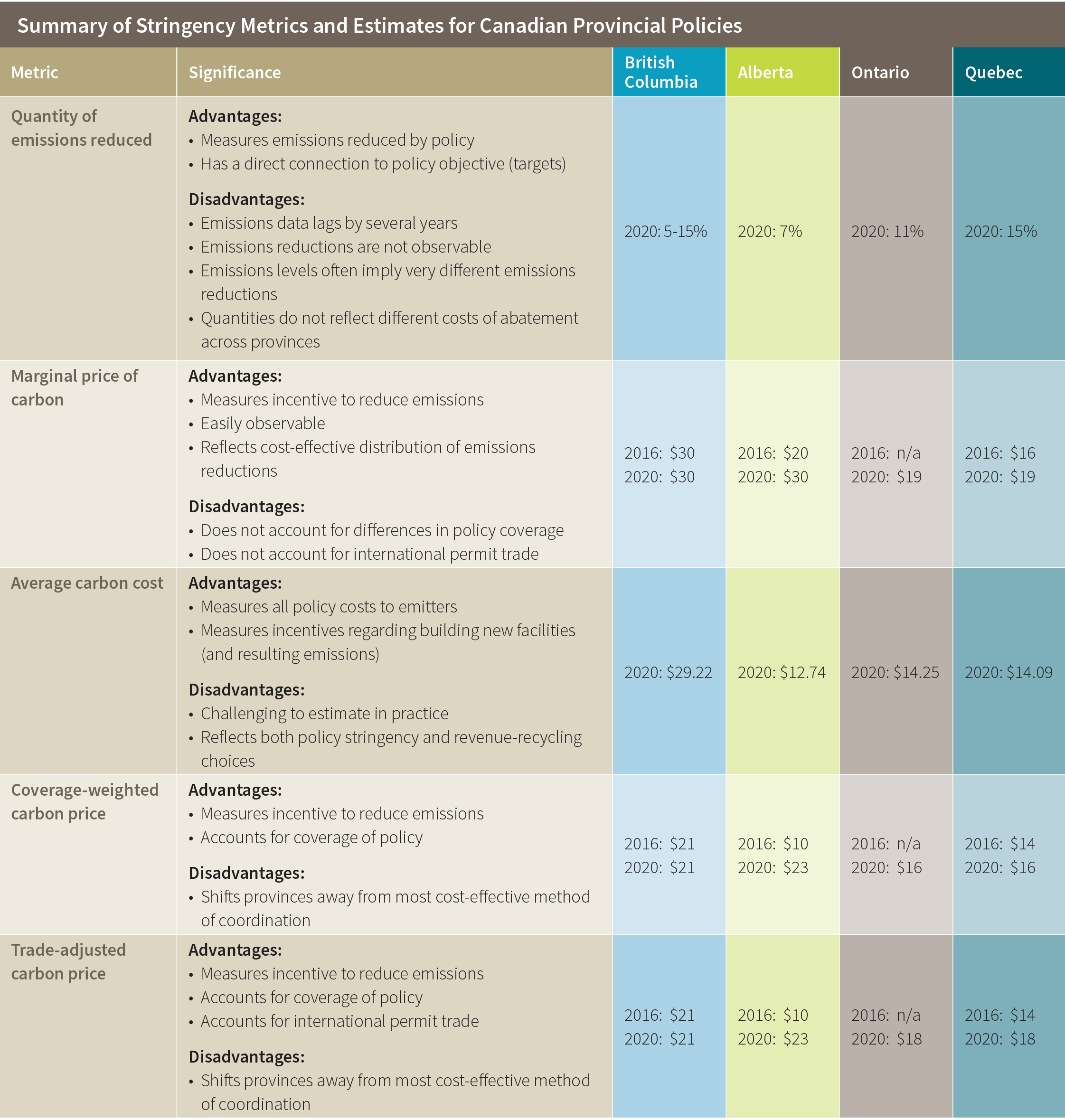
TLDR: Comparing Stringency of Carbon Pricing Policies

We have a new report out this week on comparing the stringency of provincial carbon pricing policies. In case you don’t have time to read it all, this blog provides quick overview of the essentials. Be sure to check out the full report for (much) more detail.
Comparing stringency is important… but trickier than it sounds
Carbon pricing isn’t automatically effective at reducing greenhouse gas (GHG) emissions. Instead, effectiveness depends on stringency. More stringent policy creates stronger incentives and leads to deeper emissions reductions over time.
Canadian provinces have a range of carbon pricing systems. To benchmark their contributions toward national emissions reductions, we need ways to compare their stringency. Yet differences between provinces’ systems—for example, the share of total emissions to which the price applies, or the extent to which out-of-province emissions trading is permitted—makes comparison a little complicated.
Multiple metrics of stringency are useful in comparing policies
There’s more than one way to measure policy stringency, and our paper walks through five possible metrics. Each illustrates a slightly different aspect of stringency. Some are directly observable, while others can only be estimated using economic modelling.
The table below summarizes the advantages and disadvantages of the five metrics. It also shows our estimates for each using provincial carbon pricing policies in B.C., Alberta, Ontario, and Quebec.

Comparing stringency can also support efforts to coordinate policy
Coordinating carbon pricing policies makes sense for a number of reasons. Yet there are multiple paths to coordinated pan-Canadian carbon pricing policy. The provinces, for example, could themselves choose to align their respective policies. Alternatively, the federal government could define a minimum level of stringency, with provincial policies meeting or exceeding that level being deemed “equivalent.” In either case, some metric of stringency is needed to define equivalent policy.
The price of carbon is a natural starting point for coordination. After all, equalizing carbon prices can minimize the overall costs of emissions reductions. Yet when separate, un-linked provincial policies have different designs—in particular with respect to coverage and international permit trading—price alone may be less useful as a metric for coordination.
The new metrics proposed here are designed to account for these differences in policy design, and to support efforts to compare and coordinate provincial policies. In particular, the trade-adjusted carbon price measure provides a practical and flexible means of comparing stringency across provincial policies.
No metric of stringency is perfect
There is no perfect way to compare stringency. Even imperfect metrics, however, can be useful, and can aid in developing smart climate policy. Our new report examines differences between provincial policy designs and seeks to find common ground between different perspectives in measuring stringency. It recognizes the importance of both quantities of emissions reductions and explicit carbon prices, but explores practical ways to compare them in a common framework.
Read the Report Watch the Webinar



Comments are closed.